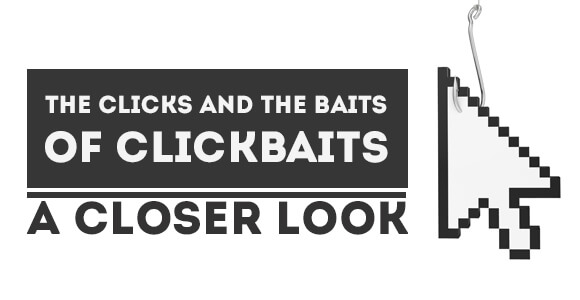Okay, I’ve been dying to write this blog. As I’m sure you’re dying to be richer and thinner. That said, keep your expectations low. After all, I did start with a clickbait and anything good rarely comes out of that.
If you have any contact with the outside world, it is safe to say you live and breathe marketing texts and voice messages on a daily basis. We frankly live in a world where clickbaits are the new normal, and they can be found in most headline decisions nowadays. Can we blame it on decreasing attention spans? Maybe. Can we blame it on anyone in particular, for that matter? Perhaps.
I’m sure most of you already know this, but still…
What Are Clickbaits?
In straightforward terms, clickbaits are outlandish headlines whose sole purpose is to drive clicks towards a page. So far so good. The downside of clickbaits, however, is that they are all style and no soul. They capture interest by promising instant solutions, terrifying stories, and mystery, but the content they lead to is often subpar and nothing more than cheap chum.
Do Clickbaits Work?
You be the judge
If you are a web content writer, you want to create clickable headlines that encourage people to read your content. After all, you didn’t spend all that time (and money on coffee refills) for nothing. If your clickbait is designed correctly and is catchy, it can be very successful in getting more traffic to your page. If you are only after traffic numbers, this will certainly help.
BUT, and there is always a but, if you really want to connect with readers, relay a message, make them your followers, then tricking them to click and leaving them out to dry by not delivering on the promise in your heading, they will lose trust in you and your bounce rate will skyrocket. It’s more than just crafting a clickbait and hoping for the best.
The long & short term of it all
In the long run, media that fails to deliver will ultimately not be trusted. It can drag down some of its affiliates, too.
In shorter terms, there is nothing worse than having a web content writer pour their heart and soul into a copy only to have no one read it. Clickbaits can get that article the attention it deserves. That is only possible if creativity is focused crafting a heading that presents the most of what’s in the text and not promising reduced belly fat when it’s an ASO related blog, for example.
The natural question arises, how do you use just the right amount of bait for people to click?
Easy. You just need to…
Create the Curiosity Gap
This is an extensive story for another time, but for the sake of making my point, I will just scrap the surface here. Simply put, the Curiosity Gap is a theory and practice popularized by many successful online media, and it stipulates creating an irresistible headline closely tied to the actual content. It is a teaser of sorts that only hints to the reader of what’s to come. It is about going away from the “instant click” and closer to nurturing deeper knowledge.
How does a good example look?
A Peek into the Lab — How Are Product Reviews Made
The “bad example” version would be along the lines of:
The One Secret to Product Reviews You Are Dying to Know…
Do you see the difference now? Good.
I personally think the future is in the Curiosity Gap. At least for those who believe in quality web content and engaging readers for more than a click-while. So, what do you think? Let me know in the comments below!






